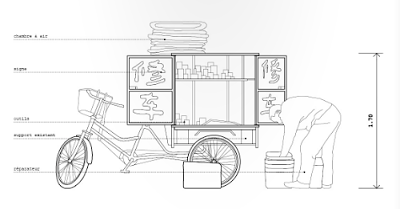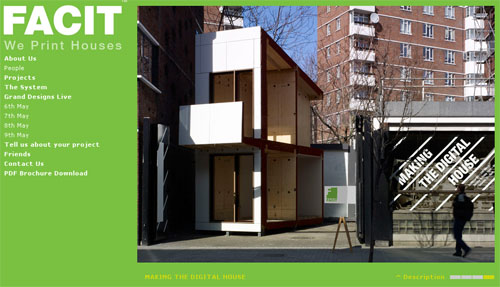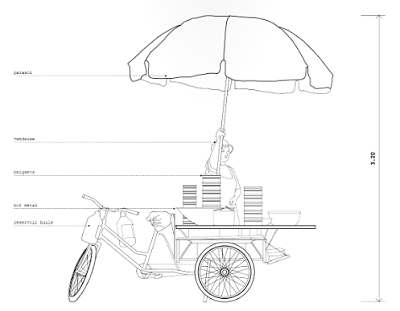Sticky Postings
By fabric | ch
-----
As we continue to lack a decent search engine on this blog and as we don't use a "tag cloud" ... This post could help navigate through the updated content on | rblg (as of 09.2023), via all its tags!
FIND BELOW ALL THE TAGS THAT CAN BE USED TO NAVIGATE IN THE CONTENTS OF | RBLG BLOG:
(to be seen just below if you're navigating on the blog's html pages or here for rss readers)
--
Note that we had to hit the "pause" button on our reblogging activities a while ago (mainly because we ran out of time, but also because we received complaints from a major image stock company about some images that were displayed on | rblg, an activity that we felt was still "fair use" - we've never made any money or advertised on this site).
Nevertheless, we continue to publish from time to time information on the activities of fabric | ch, or content directly related to its work (documentation).
Wednesday, September 04. 2013
Via Transit-City / Urban & Mobile Think Tank


Si vous avez été à Beijing, vous avez forcément vu ces machines légères et hybrides. Leur esthétisme est souvent douteux, mais leur rôle bien réel car elles offrent une autre mobilité que certains considèrent comme dépassé. On peut au contraire imaginer qu'elles représentent l'avenir d'une nouvelle mobilité urbaine qui s'installera de plus en plus entre les voitures et les vélos, et ce aussi bien dans les pays riches que dans les pays pauvres.
Ces planches sont tirées du superbe "Anatomie d'une ville chinoise" réalisé par deux jeunes français qui ont voulu "aborder le contexte urbain chinois à l'échelle macroscopique, c'est à dire humaine". Je n'ai retenu pour ce post que les illustrations liées aux petits véhicules, mais il y a évidement bien d'autres lieux et objets qui sont décrits dans cette très belle réflexion.
Ce travail rappelle le passionnant " Micromachins" sur les services urbains décentralisés en Asie du sud, et qui est désormais téléchargeable, là.
Monday, February 13. 2012
Via MIT Technology Review (blog)
-----
Before you dismiss it as a fad, consider the evolution of 2-D printing.
By Tim Maly
|
The Miehle P.P. & Mfg. Co. 1905 printing press. Credit: Public Domain / Wikipedia.
|
I'd like to sneak up on the question of 3-D printing by way of boring old 2-D printing.
Typography used to be heavy industry. The companies that make typefaces are still called foundries because there was a time when letters were made of metal. When you got enough of them together to reliably set a whole book or whatever, you had a serious amount of hardware on your hands. Fonts were forged. Picking a new one was a large capital investment. Today, fonts are a thing that you pick from a drop-down menu and printers are things in your home that can render just about any typeface you can imagine.
We went from massive metal fonts and centralized presses to the current desktop regime by degrees. In the early days of desktop printing, we had the dot-matrix. The deal was simple: "We give you one crappy font and you need specialized paper but you can do this at home". It wasn’t useful for much, but it was useful for some things, and used frequently enough that it was worth developing improvements.
Today, it's reasonable for most people to have a pile of paper and a printer that cost them next to nothing and for businesses to have stockrooms laden with the raw material of documents. Print shops have had to stay a step ahead, selling convenience, their ability to print nicer things on bigger formats, or the economics of scale.
I want you to bear this in mind, when you consider Chris Mims' argument that the idea that 3-D printing will be a mature technology "on any reasonable time scale" is absurd.
Chris is right that 3-D printing as it stands isn't a replacement for the contemporary industrial supply chain. It's clearly a transitional technology. The materials suck. The resolution is terrible. The objects are fragile. You can't recycle the stuff.
Maybe early home 3-D printers use only plastic and can only make objects that fall within certain performance restrictions. Maybe it starts out as, like, jewelry, the latest model toys, and parts for Jay Leno's car. But there's no way that lasts. People are already working on the problem. They are working especially hard on the materials problem.
At the same time, it's not hard to imagine a convergence from the other direction. Some materials and formats will fall out of favor because they are hard to make rapidly. Think of how most documents are 8.5×11 (or A4) these days. It's just not worth the hassle of wrangling dozens of paper formats.
It's also important not to confuse 3-D printing & desktop-class fabrication. These aren't the same thing. There is more to desktop manufacturing than 3-D printers. A well-appointed contemporary maker workshop has working CNC mills, lathes, and laser cutters. A well-appointed design studio has the tools to make and finish prototypes that look very nice indeed. Aside from the 3-D printer, none of these tools are terribly science-fictional; they're well-established technologies that happen to be getting cheaper from year to year.
Something interesting happens when the cost of tooling-up falls. There comes a point where your production runs are small enough that the economies of scale that justify container ships from China stop working. There comes a point where making new things isn't a capital investment but simply a marginal one. Fab shops are already popping up, just like print shops did.
Copyright Technology Review 2012.
Monday, August 09. 2010
Personal comment:
A funny anachronic short movie for the return of vacations!
Thursday, July 22. 2010
Via e-flux
-----
Yerba Buena Center for the Arts

Eames Hack Chair by Eames Hacks
Andrew McCandlish, Tom Reynolds, Jared Delorenzo, Alexandra Powell, Tim Peet and Alie Thomer.
Photo courtesy of fuseproject
TechnoCRAFT
Hackers, Modders, Fabbers, Tweakers and Design in the Age of Individuality
July 10 – October 3, 2010
Yerba Buena Center for the Arts
701 Mission St., San Francisco, CA 94103
www.ybca.org
Curated by Yves Béhar
The history of craft and design began with individuals making what they could not afford to buy, which created a deep and personal connection between owner and object. With the Industrial Revolution, the tradition of craft mostly disappeared as people became enamored with the abundance and affordability of mass-produced, high-quality goods. The rise of mass-production and mass-consumerism undeniably elevated the average person’s quality of life. However, the cultural sameness that materialized, combined with the loss of individual connection to objects, left many feeling dissatisfied. As a result, they took matters into their own hands.
A resurgence of the individualization of what we consume is in the works today; it spans functions, ergonomics and appearance. The new “makers and craftsmen” range from the everyday person to the tech entrepreneur, from the young, curious designer to the multinational corporation focused on custom solutions. This new breed shares a sense of "making" and openness to collaboration while operating in a more individualized marketplace, which raises the question – Are we in the midst of a new age in manufacturing and mass-consumption on an individual scale?
TechnoCRAFT highlights the disappearance of the traditional boundary between the role of the designer and that of the consumer. In doing so, it traces the current movement in design away from fixed objects, toward open "design platforms" that invite people to participate in the creative process in a collaborative way. The exhibit focuses on the following six themes:
Crowdsourcing mines the collective talent of the community to develop new design solutions. From product generation to the voting process, crowdsourcing puts the decision-making power in the hands of the masses.
Platforms consist of designers creating open, software-based systems that provide the tools for individuals to create and/or customize their own unique products. From shoes to t-shirts to fantastic creatures, platforms make it easy for individuals of all skill levels to take on the role of designer.
Blueprints are ideas that are replicable, putting the power to create in the hands of the consumer. Rather than creating and selling a finished product, designers sell or give away the instructions so that anyone can create/recreate the design in their own way.
Hacks is a term that has moved far beyond the manipulation of computer software, extending into the public’s consciousness. Tables, iPhones and bikes are revised, modified and manipulated to achieve a new look or new functionality.
Incompletes are works that intentionally leave room for creativity on the part of the user. The degree to which the end user is involved varies with each design, but all depend on the role of the user to provide input for a design to properly function.
Modules are individual components that come together to create customized creations. Intelligently designed modules allow for the user to develop an outcome that is driven in equal parts by ingenuity and budget.
The works on display in TechnoCRAFT span the design spectrum from intentional collaborations between designer and user to outsider hacks, where "finished" products are adapted or modified. Special attention is given to products that embody the intersection of technology and craft that has enabled new and unprecedented levels of user participation which will have profound implications for the future of design and experience making.
Friday, July 09. 2010
Via DVICE
-----

The idea of a "musical shower" inspires a lot of different images in one's mind, but this one doesn't use water. Instead, Burger King is making it so customers can listen to their own music while they eat, without disturbing anyone else. At least, that's the plan.
The system uses your own iPod or iPhone, and at its core, it's a fancy dock. You play your music just as you would at home. What's different? You've got the "shower" component hanging above, which should keep your tunes contained to your booth.
It's a cool idea and one that looks fun to play around with, but let's hope it works like it should or else you're going to have a lot of clashing music and a restaurant full of annoyed customers.
Burger King is rolling the musical showers out at locations in Tokyo (a location which Burger King has already called it quits once). If it's popular there, maybe we'll see something like this find its way to America.
Tuesday, January 13. 2009

Facit, un nouveau service de construction en UK basé essentiellement sur les techniques de découpes numériques (cnc surtout, pliage, etc.). C'est un début évidemment (les résultats d'un point de vue architectural ne sont pas très excitants, le matériau de construction semble être pour l'instant limité au bois), mais c'est ue démarche de fabrication à suivre, c'est évident. On pense ici aussi bien sûr à Gramazio & Kohler à Zürich (ETHZ) et leur "digital fabrication unit".
Monday, November 03. 2008
From Wikipedia, the free encyclopedia
-
The Beijing Weather Modification Office is a unit of the Beijing Meteorological Bureau tasked with weather control in Beijing and its surrounding areas, including parts of Hebei and Inner Mongolia.[1][2][3] The Beijing Weather Modification Office form a part of China's nationwide weather control effort, believed to be the world's largest; it employs 37,000 people nationwide, who seed clouds by firing rockets and shells loaded with silver iodide into them.[4] According to Zhang Qiang, head of the Office, cloud seeding increased precipitation in Beijing by about one-eighth in 2004; nationwide, similar efforts are believed to have added 7.4 trillion cubic feet (210 km3) of rain between 1995 and 2003.[5]
The work of the Office is largely aimed at hailstorm prevention or making rain to end droughts; they have also induced precipitation for purposes of firefighting or counteracting the effect of severe dust storms, as they did in the aftermath of one storm in April 2006 which dropped 300,000 tonnes of dust and sand on the city and was believed to have been the largest in five years.[2][6] Their technology was also used to create snow on New Year's Day in 1997.[7] Other proposed future uses for induced precipitation include lowering temperatures in summer, in hopes of reducing electricity consumption.[5] More prominently, they have also been enlisted by the Chinese government to attempt to ensure that the 2008 Summer Olympics are free of rain, by breaking up clouds headed towards the capital and forcing them to drop rain on outlying areas instead.[4]
Friday, October 31. 2008

CONCEPT
Cross-media Promotion of SONY BRAVIA “Live Color” is the concept of SONY BRAVIA.
We aimed for each and every one of the users to further experience the concept of
discovering and enjoying color using the internet.
EXECUTION
Sony Building in Tokyo turning into the color you want.
Presenting a new way to communicate messages in the internet era.
This project (service?) allows users to “color” Sony building located in Ginza,
the cultural center of Japan, from wherever they are.
Live Cam has been set up displaying the Sony building.
Users can pick-up color from live feeds and TV commercials on screen using
the dropper curser and drop it on the Sony building!
The whole building will turn into the color chosen by the user and this can be enjoyed live via live cam.
Those who tried this were able to experience the Sony BRAVIA “Live Color” excitement.
Many internet users visited the website and experienced the original technology developed for this project:
“Pick-up color from images delivered live” and “Selected color is reflected by the LED lights on the Sony building in real time”.
Connecting the company-owned media (Sony building) to the internet using cutting edge technology,
we introduced a completely new way to experience the BRAVIA “Live Color” message.
Point 1: Media owned by Sony (Sony building) was used.
Point 2: User can freely choose any color from TV commercials or live feeds.
Point 3: Building changes color in real time.
 

When the building changes color, the BRAVIA ad changes color with it.
RESULTS
During the campaign, website access sky-rocketed, nearly causing it to be shut down!
Over 100,000 comments were left on WebNews, i.e. Yahoo! News, and Blogs.
It made headlines on TV and newspapers for great publicity
|
















